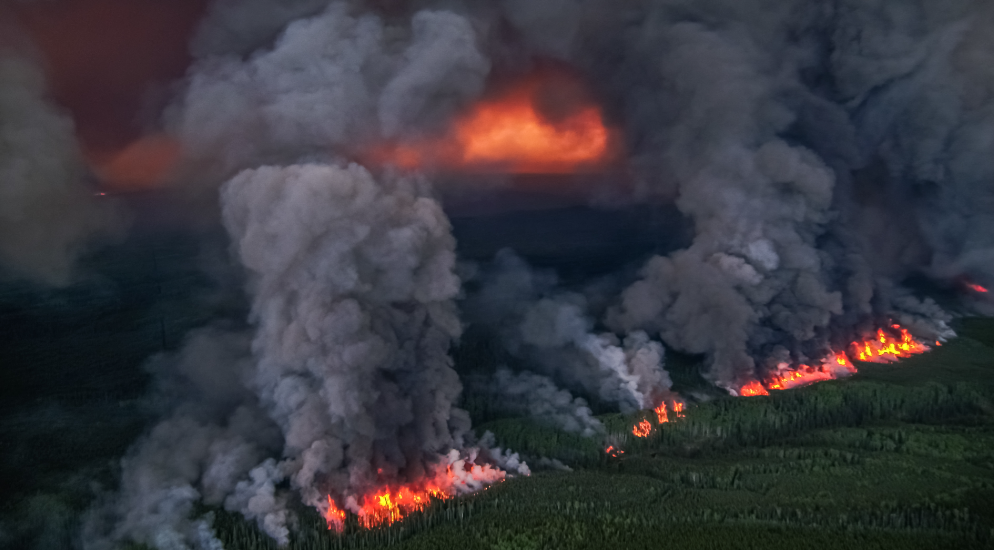Lightning sparks about 200 new wildfires across B.C. as heat grips Interior

Posted July 10, 2023 10:53 am.
Last Updated July 10, 2023 12:46 pm.
Hundreds of lightning strikes in many parts of British Columbia almost tripled the number of active wildfires in the province over the weekend, with most burning in central and northern B.C.
The BC Wildfire Service is reporting more than 300 fires, with 87 spotted in the last 24 hours and almost 200 of the total number ranked as out of control.
The wildfire service is bracing for challenging conditions, with lightning storms still in the forecast for most of the week, as well as heat warnings or above-average temperatures through the central Interior.
Of the 13 blazes listed as “fires of note,” all but two are located in the Prince George and Northwest fire centres. The wildfire service says 11 have prompted at least one evacuation order, although no major communities are threatened.

FILE – The Donnie Creek wildfire located north of Fort St. John pictured in late June. (Courtesy BC Wildfire Service)
Some of the fires are threatening rural highways, including Highway 27 south of Fort St. James and Highway 77 north of Fort Nelson, while flames first spotted last Thursday near the Yukon boundary now cover 300 square kilometres close to Highway 37, but aren’t immediately affecting the link to Watson Lake and Whitehorse.
A wildfire in Yukon has roughly tripled in size since Sunday and remains out of control, charring about three square kilometres of bush in the Ibex Valley, about 30 kilometres due west of Whitehorse, south of the Alaska Highway, prompting an evacuation alert for numerous properties along the route.
B.C.’s wildfire danger was high to extreme across all but small pockets of the province on Monday.
Environment Canada posted a severe thunderstorm watch for the Fort Nelson and Peace River regions, the same area where large fires forced evacuations in July.
Related articles:
-
Lean more on Indigenous knowledge in wildfire management, expert says
-
B.C. drought conditions expected to get worse: BC Wildfire Service
-
B.C. expecting hotter-than-normal summer: ECCC
The weather office noted daily high temperature records were set in the province Sunday, including a high of 33 degrees Celsius in Fort Nelson, two degrees hotter than the previous record for that northeastern community, set 64 years ago.
Forecasters said Nakusp in B.C.’s southeast also posted a sizzling 37.2 C on Sunday, edging its old mark set 22 years earlier, and while no daily highs were posted in Yukon, that territory remains under heat warnings stretching almost 500 kilometres from its boundaries with B.C. and the Northwest Territories north to Mayo.
Conditions could ease slightly in B.C. by Tuesday, but Environment Canada said cooler weather was not likely in Yukon for several more days.








